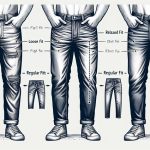You wouldn't build a house without measuring the materials, and sewing is no different. Just as a builder uses the weight of lumber and concrete to ensure a sturdy structure, a fabric weight calculator is the key to creating flawless garments.
By inputting the type and dimensions of your fabric, this tool provides the precise weight needed for the perfect drape and fit. Mastering this essential step will elevate your sewing projects to a professional level.
In this guide, you'll learn how to use a fabric weight calculator for impeccable results, ensuring that your creations are not only stylish but also beautifully tailored to your unique measurements.
Key Takeaways
- Fabric weight is crucial for sewing projects and affects fabric draping, breathability, and suitability for different garments.
- Accurate measurements and specifications are essential for fabric weight calculation.
- Utilizing a fabric weight calculator helps in choosing the right amount of fabric and ensures precise material planning.
- Adjusting patterns, designs, and design details based on fabric weight is crucial for achieving optimal sewing results.
Understanding Fabric Weight
To achieve perfect sewing results, you need to understand fabric weight and its impact on your projects. Understanding fabric types and fabric weight considerations is crucial for mastering the art of sewing. Different fabrics have varying weights, which can greatly affect the outcome of your project.
Lightweight fabrics like chiffon or organza create a flowing and delicate look, perfect for garments with a lot of movement. On the other hand, heavier fabrics such as denim or canvas provide structure and durability, making them ideal for items like bags or jackets.
When choosing a fabric for your project, consider the weight that will best complement the design and functionality you have in mind. The fabric weight affects how the fabric drapes, its breathability, and its suitability for different types of garments or items. It's important to take into account the weight of the fabric when selecting patterns as well, as certain designs may be better suited to lighter or heavier fabrics.
Choosing the Right Fabric
You should begin by assessing the specific fabric weight needed for your sewing project using a fabric weight calculator. Once you have determined the appropriate weight, consider the fabric texture. Different textures can significantly impact the look and feel of your final product. For example, if you're making a flowing summer dress, a lightweight and breathable fabric with a soft drape, such as chiffon or crepe, would be a suitable choice. On the other hand, for structured garments like blazers or pencil skirts, consider fabrics with more body, such as wool or denim.
Additionally, color coordination is crucial when choosing the right fabric. Consider the color palette of your project and how the fabric will complement it. If you're creating a vibrant, eye-catching piece, you might opt for a bold, colorful fabric. For a more understated or elegant look, neutral or muted tones might be more suitable. Always remember to consider the colorfastness of the fabric to ensure that it maintains its color after washing.
Inputting Measurements and Specifications
To ensure accurate fabric weight and precision in sewing, it's crucial to input the right measurements and specifications into the fabric weight calculator. This will help you achieve the perfect results you're aiming for in your sewing projects.
Accurate Fabric Weight
When inputting measurements and specifications into the fabric weight calculator, ensure accuracy for optimal sewing results.
Start by determining the fabric density, which refers to the mass per unit volume of the material. It's essential to input this value correctly to get accurate results.
Next, consider the weight distribution within the fabric. This involves understanding how the fabric's weight is distributed across its surface.
Take precise measurements of the fabric's dimensions, ensuring that the length, width, and thickness are all accurately recorded.
Additionally, input any specific specifications such as the type of fabric and its weave. These details will help the fabric weight calculator provide the most precise measurements for your sewing project, leading to impeccable results.
Accuracy in inputting measurements and specifications is key to achieving mastery in fabric weight calculation.
Precision in Sewing
Inputting accurate measurements and specifications is essential for achieving precise fabric weight calculations and ensuring impeccable sewing results. When it comes to precision sewing, attention to detail is crucial. Here are three key aspects to consider when inputting measurements and specifications:
- Use Quality Measuring Tools: Invest in high-quality measuring tapes, rulers, and gauges to ensure accuracy in your measurements.
- Double-Check Measurements: Always double-check your measurements to avoid errors that can lead to ill-fitting or misaligned fabric pieces.
- Understand Sewing Techniques: Familiarize yourself with various sewing techniques and how they impact fabric weight and measurements, such as seam allowances and pattern adjustments.
Utilizing the Fabric Weight Calculator
When using the fabric weight calculator, it's essential to consider the fabric weight and type to ensure accurate results.
By inputting this information, you can calculate the yardage needed for your sewing project with precision.
Understanding how to utilize the fabric weight calculator will help you choose the right amount of fabric, ultimately leading to perfect sewing results.
Choosing Fabric Weight
To achieve precise sewing results, use a fabric weight calculator to determine the appropriate fabric weight for your project.
When choosing fabric weight, consider the following:
- Fabric Thickness: Different sewing techniques require specific fabric thickness. Thicker fabrics are suitable for structured garments, while lighter fabrics work well for drapery and flowy styles.
- Project Requirements: Consider the specific needs of your project. For example, if you're making a winter coat, a heavier fabric weight may be necessary for warmth and durability.
- Garment Design: The design of your garment also influences the choice of fabric weight. A tailored blazer may require a medium-weight fabric, while a summer dress may be better suited for a lightweight option.
Calculating Yardage Accurately
Once you've determined the fabric weight needed for your sewing project, calculating yardage accurately using a fabric weight calculator is crucial for efficient material planning. To estimate the required yardage, input the chosen fabric weight, project type, and dimensions into the fabric weight calculator. It will then provide you with the precise yardage needed, helping you avoid overage or shortage of fabric.
When selecting fabric, keep in mind that different materials have varying widths, so the yardage estimation will be influenced by the specific fabric width. The fabric weight calculator takes this into account, ensuring accurate calculations.
Interpreting the Calculated Results
You may find that the calculated results from the fabric weight calculator provide valuable insights into the suitability of the fabric for your sewing project. Understanding how to interpret these results is essential for achieving the best sewing outcomes. Here are three key considerations when interpreting the calculated results:
- Fabric Weight Suitability: The calculated results will indicate whether the fabric's weight aligns with the requirements of your sewing pattern. If the fabric weight is too light or too heavy for the intended project, it can affect the drape, structure, and overall appearance of the finished garment or item.
- Yardage Estimation: The fabric weight calculator can help you estimate the required yardage based on the weight of the fabric. This estimation is crucial for purchasing the correct amount of fabric and avoiding shortages or excess material.
- Sewing Technique Compatibility: Certain sewing techniques, such as gathering or pleating, may require fabrics of specific weights for optimal results. The calculated fabric weight can guide you in selecting the most suitable fabric for the desired sewing techniques.
Adjusting Patterns and Designs
When adjusting patterns and designs for different fabric weights, it's important to consider the impact on the overall fit and look of the garment. The key to achieving the perfect fit lies in understanding how different fabrics behave and modifying patterns accordingly.
To adjust the fit, start by choosing the right pattern size based on your measurements and the fabric weight. Heavier fabrics may require going up a size to accommodate the reduced drape, while lighter fabrics may need a smaller size to prevent excess fabric.
Pattern modification is also crucial. For heavier fabrics, consider adding ease to the pattern at the appropriate areas to ensure comfortable movement. Conversely, for lighter fabrics, minimizing ease can prevent a loose, ill-fitting look.
Additionally, pay attention to design details such as darts, pleats, and gathers, as these may need to be adjusted to suit the fabric weight.
Achieving Perfect Sewing Results
How can you ensure that your sewing results are perfect when using a fabric weight calculator? Achieving perfect sewing results requires attention to detail and precision in your approach. Here are three essential tips to help you achieve flawless sewing outcomes:
- Measuring Accuracy: Accurate measurements are crucial for achieving perfect sewing results. Take the time to measure and double-check your fabric dimensions, pattern pieces, and seam allowances. Even the smallest miscalculation can lead to significant deviations in the final outcome.
- Fabric Selection: The type of fabric you choose significantly impacts the sewing results. Consider the weight, stretch, drape, and texture of the fabric in relation to your project. Ensure that the fabric weight aligns with the recommendations provided by the fabric weight calculator to achieve the desired outcome.
- Precision in Execution: Pay attention to every detail of the sewing process. From cutting the fabric to stitching seams and finishing touches, precision is key. Take your time to ensure that each step is executed with accuracy and care to achieve impeccable sewing results.
Frequently Asked Questions
Can the Fabric Weight Calculator Be Used for Both Woven and Knit Fabrics?
Yes, the fabric weight calculator can be used for both woven and knit fabrics. It helps determine the ideal fabric weight for a specific project, considering factors like fabric stretch, fit, and shrinkage.
How Can I Account for Fabric Shrinkage When Using the Calculator?
To account for fabric shrinkage when using the calculator, adjust your measurements accordingly. Calculate the shrinkage percentage by pre-washing a test swatch and comparing it to the original size. Then, modify your pattern or measurements accordingly for accurate results.
Are There Any Special Considerations for Using the Fabric Weight Calculator With Specialty Fabrics Like Leather or Faux Fur?
When sewing with leather, ensure the fabric weight calculator accounts for the heavy nature of leather. For faux fur, consider the thickness and plushness to accurately determine the fabric weight needed for perfect sewing results.
Can the Calculator Account for Fabric Stretch and How It May Affect the Final Garment Fit?
Yes, the fabric weight calculator can account for fabric stretch and its impact on garment fit. By inputting stretch percentage and fabric weight, the calculator determines the ideal fabric weight for a well-fitted garment.
What Are Some Common Mistakes to Avoid When Using the Fabric Weight Calculator?
When using the fabric weight calculator, common mistakes to avoid include inputting inaccurate fabric weight or not considering the weight of additional materials. To ensure accuracy, double-check your measurements and choose the right fabric weight for your project.
- How Does Ring Spun Cotton Affect Garment Fit and Shape Retention? - August 13, 2024
- What Are the Challenges in Producing Ring Spun Cotton? - August 13, 2024
- Is Ring Spun Cotton Suitable for Plus-Size Clothing? - August 13, 2024







